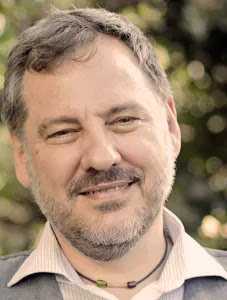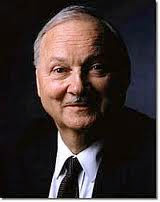Reflections on the Way Forward from the SDG OWG 10
Reflections
on the Way Forward from the SDG OWG 10
If you are hooked on intergovernmental meetings and coffee
then SDG OWG 10 was a fascinating place to be this last week. This was the
first time for governments and stakeholders to indicate what they wanted to
retain and what they wanted out of the focus areas and their sub potential
target areas.
Star of the week has to go to Farrukh Khan from Pakistan who came
very prepared for the meeting with language for the targets, timescales and %
as well as goal areas they sit under.
From Earth Negotiations Bulletin
Most disappointing were most of the
European Union members who came with just broad goal and target comments. The co-chairs
showed enormous patience with some of the Member States’ “blah blah,” and continually
reiterated that the stocktaking phase is over.
Farrukh also has to again be
complemented for bringing up Common but Differentiated Responsibilities (CBDR) in much
earlier meetings; now of course the rest of the governments caught up both for
and against.
Many developed countries argued it wasn’t relevant to the broad
discussions on the SDG framework and especially not to all goal areas, claiming it only relates to environmental
degradation. I am not sure why they
think that as Rio+20 reaffirmed the Rio Declaration which states:
“In view of the different contributions to global environmental
degradation, States have common but differentiated responsibilities (CBDR). The
developed countries acknowledge the responsibility that they bear in the
international pursuit of sustainable development in view of the pressures their
societies place on the global environment and of the technologies and financial
resources they command.”
One argument was that CBDR applies to more legally binding
agreements such as the Framework Convention on Climate Change. It is true that
the UNFCCC does commit parties to CBDR it says they:
“should act to protect the climate system “on the basis of
equality and in accordance with their common but differentiated
responsibilities and respective capabilities.”
But it is the Rio Declaration that predates the Convention and
was part of the discourse for the UN Commission on Sustainable Development - although it applied to a different time its basic pitch is still right now. How that is
interpreted in 2014 and 2015 and who it applies to will be different than it
was in 1992.
This SDG OWG was the last one for champion of the SDGs Paula
Caballero Gomez Director for Economic, Social and Environmental Affairs in the
Foreign Ministry of Colombia. It was her vision that put SDGs on the agenda for
Rio+20 the first time at the meeting in Solo Indonesia in July 2011, and it was
her who virtually single handedly at the beginning pushed a reluctant set of
negotiators AND a very reluctant set of development Ministries in donor
governments to accept the SDGs as the new development framework post 2015. Her passion and conviction of its centrality
in this transformative agenda was
certainly contagious and proved able to galvanize other stakeholders.
The NGOs
attending the 2011 Bonn DPI NGO Conference backed her and put on the table a
set of suggestions for these goals. Meanwhile even in the NGO world we had
problems with the big development NGOs and their activity or behind the scene
tried to stop the SDGs and retain a MDG focus. It was if they did not see the
impacts we are having on our planet and could only conceptually see poverty
eradication as the 'only overarching' need for the world. Paula is moving to the
World Bank and the deliberations on the new development framework will be
poorer for it over the next 18 months.
It was great to see the idea of a goal on Sustainable Cities
and Human Settlement now has broad support and there were some great
suggestions on the targets. Clearly there is still work to be done on the
balance between rural and urban but that should be clearer very soon with some
work being undertaken by the Communitas Coalition.
So what is going to happen now and what kind of report will
come out of this process? It was clear that there were different ideas on this
and the challenge for the co-chairs will be to guide with the confidence of governments as they delve more and more into the actual goals and
targets. The 19 focus areas will have to shrink to 10-12 areas; some will be
clustered while others will be mainstreamed. Overall I could imagine 10 goals
between 50-70 targets which would include perhaps 2 interlinkage targets per
goal and between 100-150 indicators, the latter being worked out by UN
Statistical Division with the help of the UN Family and experts.
The Way Forward
The co-chairs explained how they were going to take forward
the programme of work in the remaining SDG OWGs. For the 18th of April a revised document will be
produced and the 5-9th of May will be based on the revised focus
area document. The June 16-20 SDG OWG session will be a consultation on SDGs
and targets and will produce refined SDGs and targets and the final meeting July
14-18th will look to have an agreement and adoption of the report on
SDGs and targets.
As the SDG OWG will finish in July what will the report look
like? My best guess is it will be something like this:
A section indicating where there is full support, a second
section identifying work still to be done where there are divergent views and a
third section where there is no agreement. This report, though a consensus
document, will not be able to resolve all the divergent views. It will then be
handed with the President of the UN General Assembly’s outcome from his events
and the finance committees to the Stocktaking event on the 25th of
September where Heads of State will have the chance to put their views forward.
The Secretary General will then produce his synthesis report for probably late
November. It is this document that will then form the basis of the negotiations
in January to September 2015.
Meanwhile the Ambassadors for PNG and Denmark are taking
views on what the preparatory process should be for next year. I would strongly
suggest that they
- Go back to two week prepcoms – 3 or 4 of them
- That they define the structure of the document in the GA Resolution; I make a suggestion on that below based on the South African non-paper from 2002. It will help enormously in focusing the negotiations
- That stakeholders should be engaged in a similar way to the SDG OWG. An additional suggestion would be that the first day of the prepcoms is given to government stakeholder dialogue similar to the way it was undertaken in the UNCSD 1998-2001. This way, any output that the chair finds useful could be brought into the next iteration of the text for negotiations. (the CSD Chair Simon Upton’s former New Zealand Minister’s model)
Things that may be useful to consider:
- Major negotiations blocks/countries appoint their own finance Ambassadors to liaise between Financing for Development, the Sustainable Development Goals and Climate Finance discussions and informally agree the sequencing of finance decisions in all three forums.
- UN DATA is set up. Like UN Water and UN Energy as an interagency group to help with the indicators work and facilitated by UNDESA’s Statistical Division
- Capacity 2015 – Perhaps set up prior to the final decision with UNDP and the World Bank co-chairing looking to pool capacity building programmes from intergovernmental bodies to support national level implementation by coordinating the work of the intergovernmental bodies
- What to do with the intro? My suggestion would be to consider exploring including language that captures:
a. Rio Principles
b. Millennium Development Declaration
c. Rio+20
d. Human Rights
e. Gender Equity
f. Good Governance
g. Peace ,stability and resilient societies
- Means of Implementation should sit under each of the cluster areas in a structure something like the 2002 South African non-paper:
a. proposed targets and timeframes
b. proposed actions
c. resources
d. institutional mechanisms
e. co-ordination
f. monitoring
g. stakeholder involvement
h. implementation plan sustainability
There have
been some developed countries who argue this is too difficult. They might want
to look at both the South African 2002 Non Paper and Agenda 21 both of which
seemed to be able to do it.
These are my
thoughts after the April SDG OWG 10 which I hope you find useful.





Thanks Felix for your very useful post. Can I ask do you think there is a chance that the human rights approach can be mainstreamed as a means to achieving each SDG or has it been resigned to a mere end (as it currently seems to be expressed by most States)?
ReplyDeleteWell done Farrukh Khan! We count on your incisive and forward looking approach to these issues. Keep up the good work. You make your Headquarters team proud.
ReplyDeleteDịch vụ vận chuyển gửi hàng từ thái lan về việt nam chi phí thấp
ReplyDeleteĐơn vị vận chuyển gửi hàng ở thái lan về việt nam giá rẻ
Công ty vận chuyển gửi hàng ở thái lan về việt nam chi phí thấp